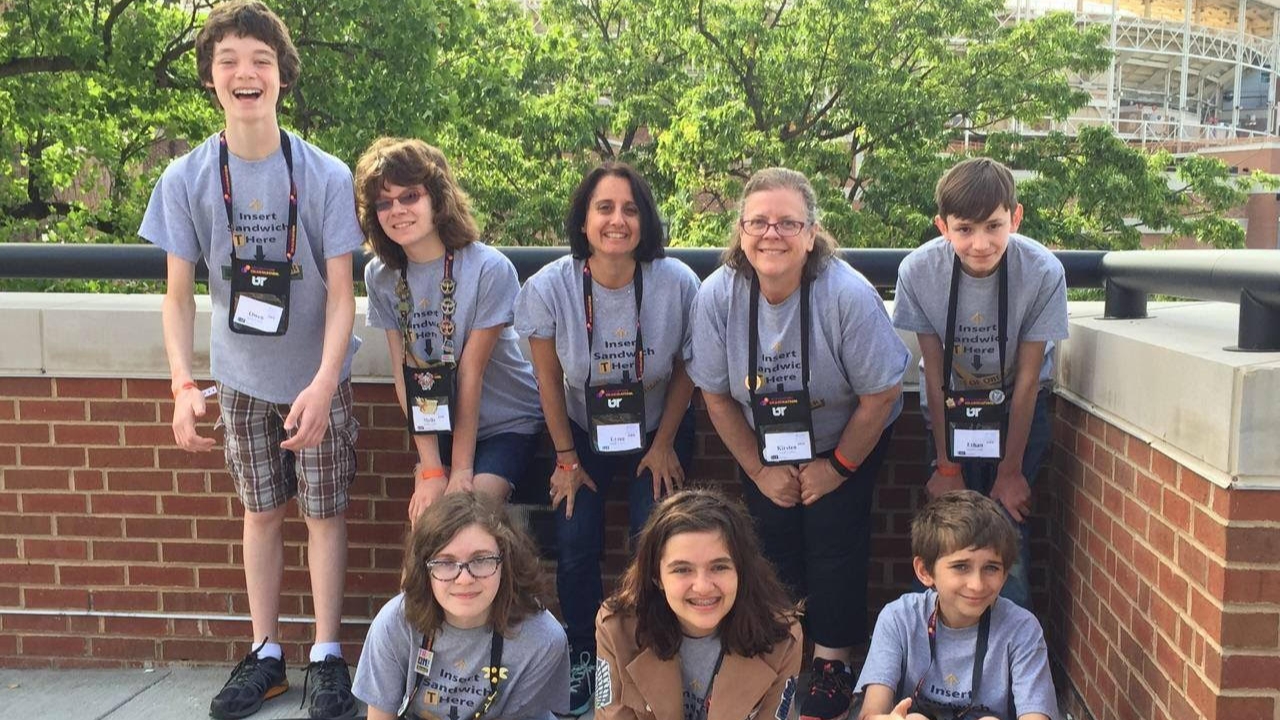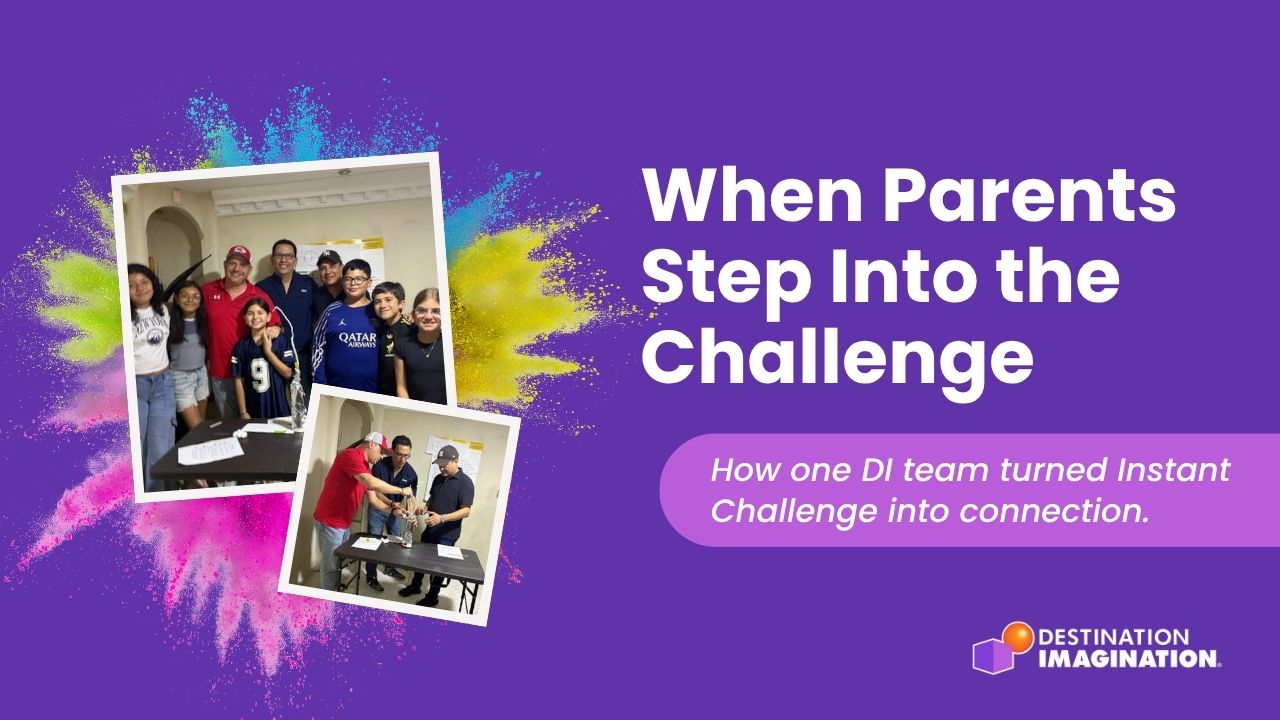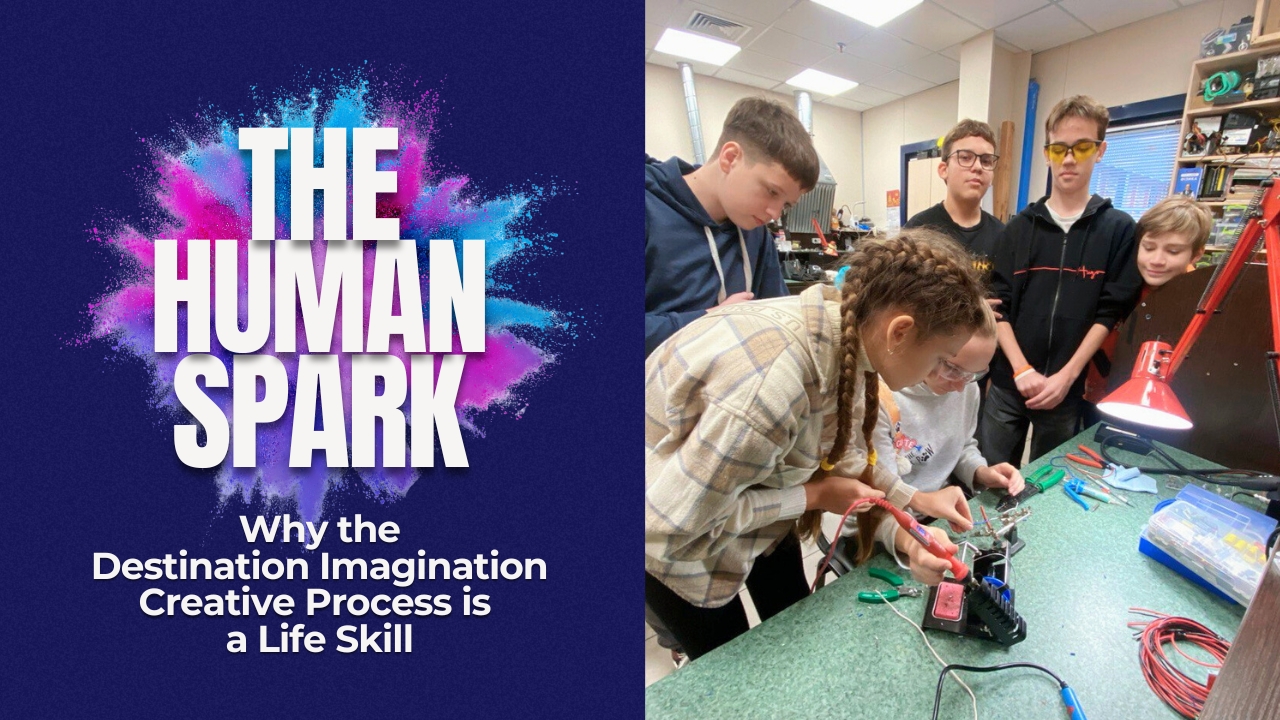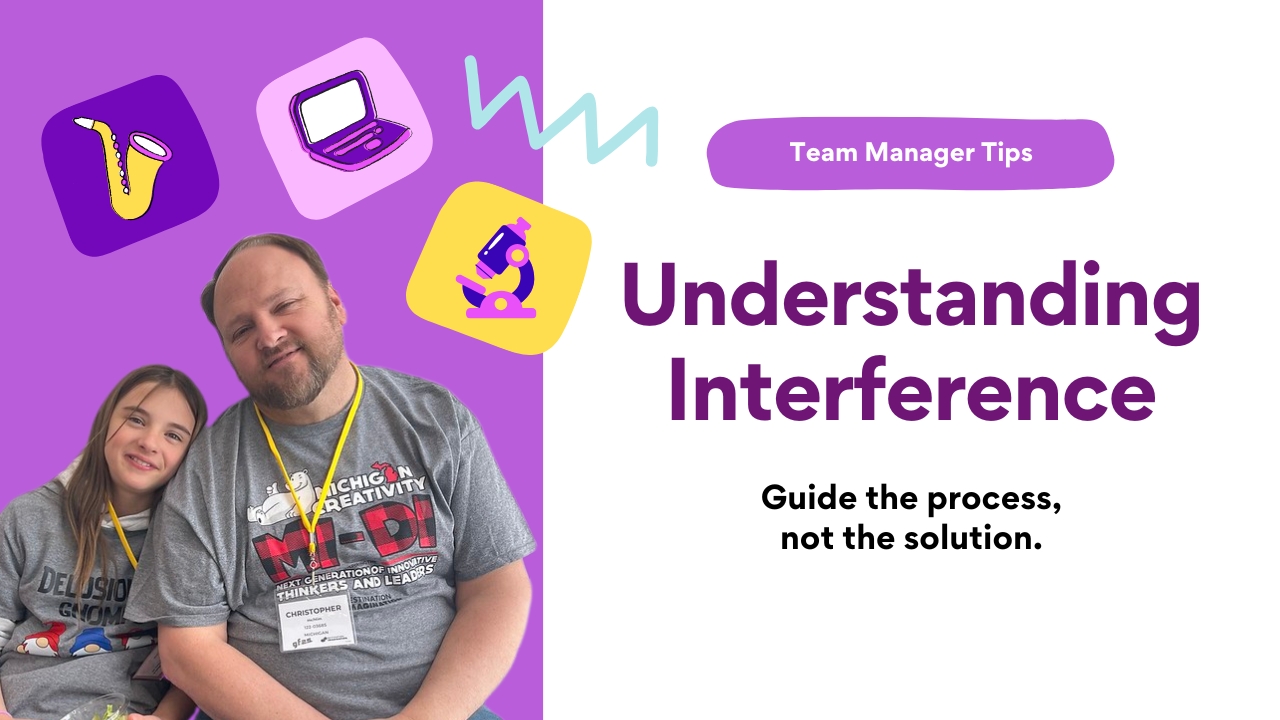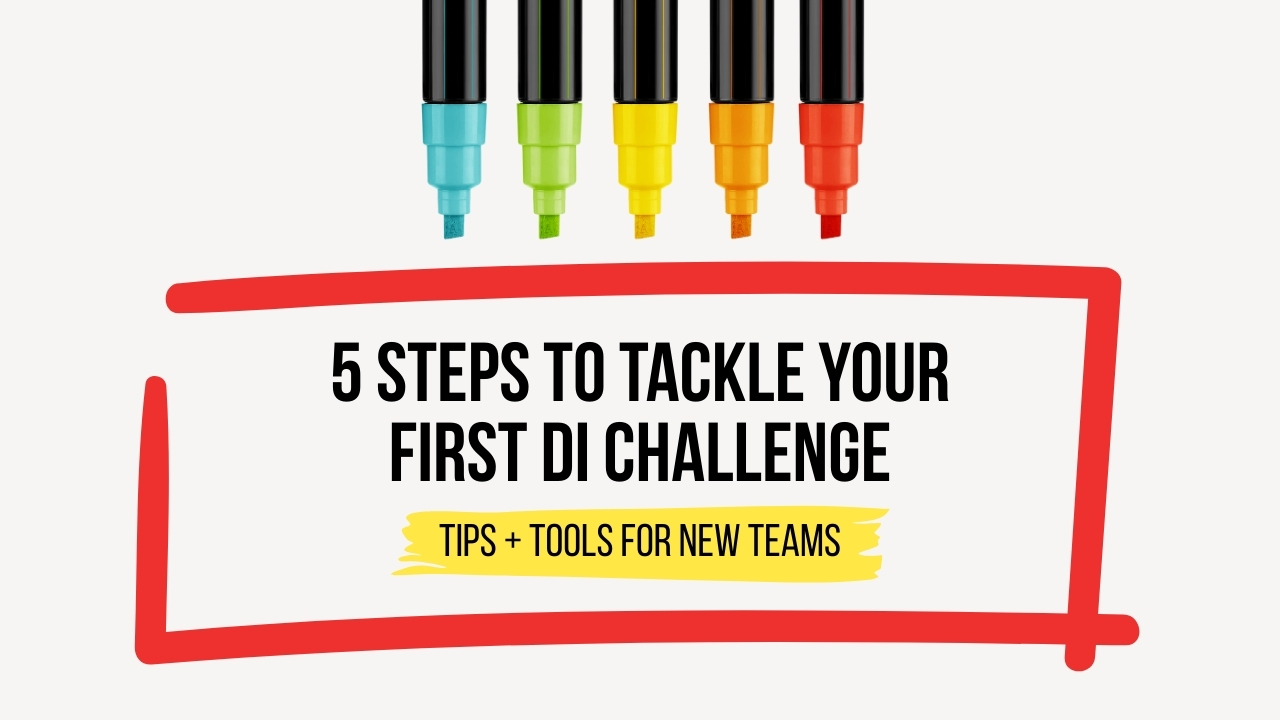By Kirsten Merryman, Team Manager, Maryland
When I first started managing a team doing the Improvisation Challenge for DI, I have to admit that I felt some despair. During the early days, a typical practice session would look something like this:
Susie proposes an idea to solve the Challenge. In fact, she proposes twenty ideas in a never-ending stream of babble. Jake stares at Susie, shouting, “How are we going to do that?” every few seconds. Susie ignores him and keeps talking. Victor stares at his shoelaces, mumbling occasional phrases of doom such as, “This skit is going to be horrible.” Monica seems more interested in the ceiling tiles than the conversation happening next to her, and Leo takes this opportunity to hone his comedic skills by making jokes about his team’s ideas. The timer buzzes and no one is ready to do anything.
In the beginning, I couldn’t envision how this group of disparate communicators could ever become a cohesive improvisation team. Over time, however, the kids acquired remarkable improv skills that helped them work as a united team in all aspects of their DI Challenges. Here are some improvisation “rules” that helped my kids discover how to respect each other in a team environment:
- Always say “yes,” or even “yes, and.” Nothing kills an improv skit faster than a character who denies an attribute given to him by another character. Yes, and… is a game that helps kids receive and build on the ideas of the group. In this game, one person suggests an activity (“Let’s take a hot-air balloon ride!”). Everyone pantomimes the activity until another person adds a new idea (“Yes, and let’s bring our elephants along!”). Kids continue adding on to the story and acting it out until everyone gets a chance to say something. Play the Yes, and… game with your team and watch them learn the power of affirmation.
- Listen and respond. We all know how hard it is to learn to listen to and respond to team members, especially when under deadlines and time constraints. Playing a game like Freeze is a fun way to practice the art of give and take. One person begins in the middle of an open space while the rest of the team stands in a circle around him. He begins to act out a scene (“Wow, this is the biggest slice of pizza I’ve ever eaten!”), using words and motions to convey what’s happening. At some point, someone calls out “Freeze!” The first child stops in mid-motion, and the second player joins him and unfreezes the scene with a completely new idea based on the position in which the first actor is frozen (“John, you’ll never learn to be a proper ballerina if you can’t hold your hands up properly!”). The two actors continue the scene until a third person freezes the action, and so on.
- Make your fellow actors look good. Good improv is founded on the idea that all actors play a supporting role and that ensemble actors must trust each member to work with the team to bring a story to life. No one hogs the spotlight for long. Wouldn’t it be wonderful to watch your team live out this principle during planning time? Car Ride is a fun game for practicing this technique. Play begins when one player drives an imaginary car, picking up riders one by one. The other players each silently choose a mood or obsession. When the driver stops to pick up a rider, the new rider’s mood or obsession is adopted convincingly by everyone in the vehicle. Play continues until all riders are in the car.
As you begin your new season, why not try some of these games as ice breakers? Kids will love the chance to let their improv skills shine while you gently provide them with tools they can use in future planning sessions. Good luck this season!
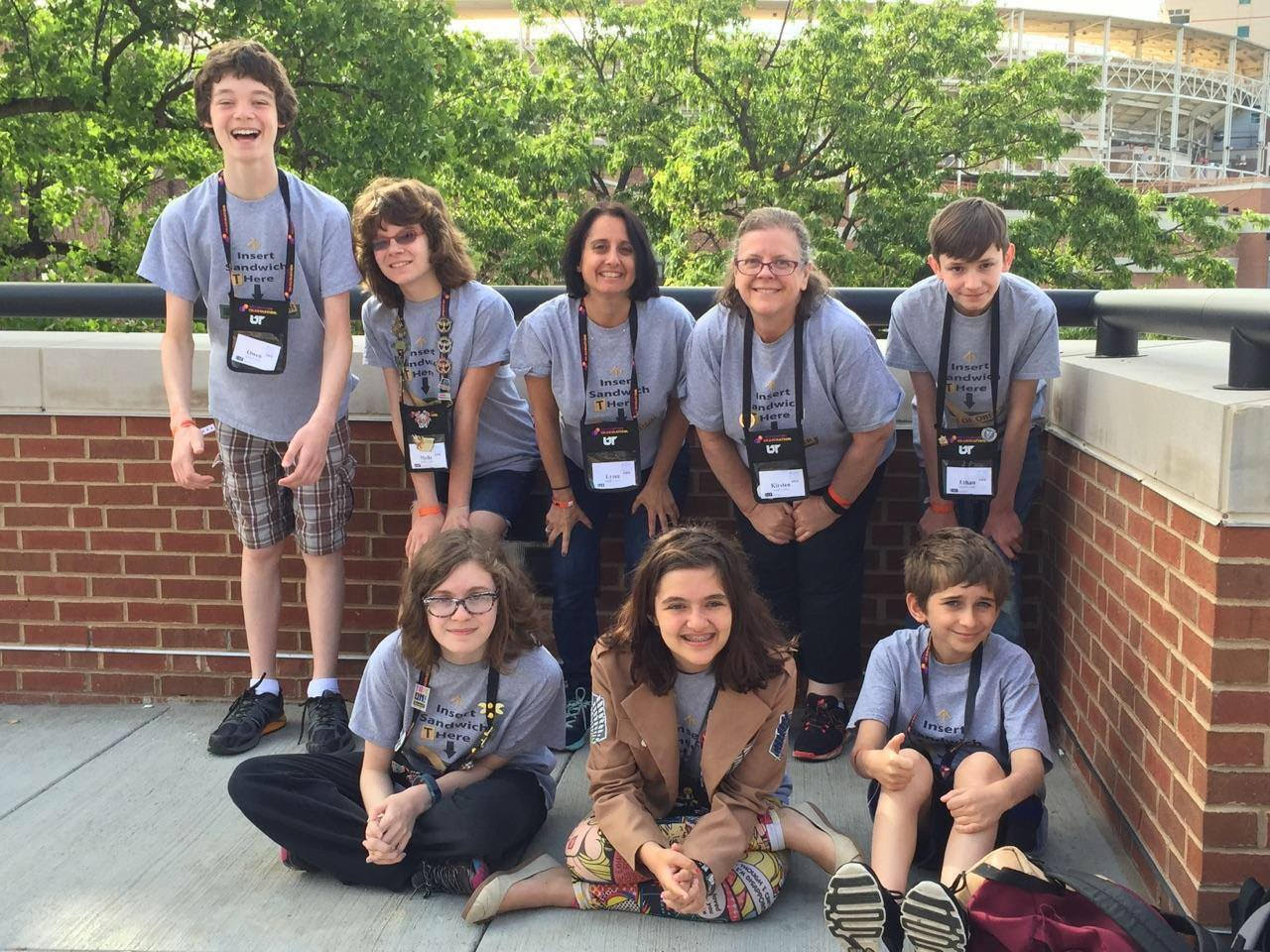
Kirsten Merryman (second from right in back row), Co-Team Manager, Lyssa Balickand, and their DI team at Global Finals 2015.
About the Author: Kirsten Merryman is a five-time Team Manager of a clan of creative kids in Maryland. She has learned to embrace the idea that managing a team is one big, chaotic improv skit and is now able to enjoy the mayhem.
